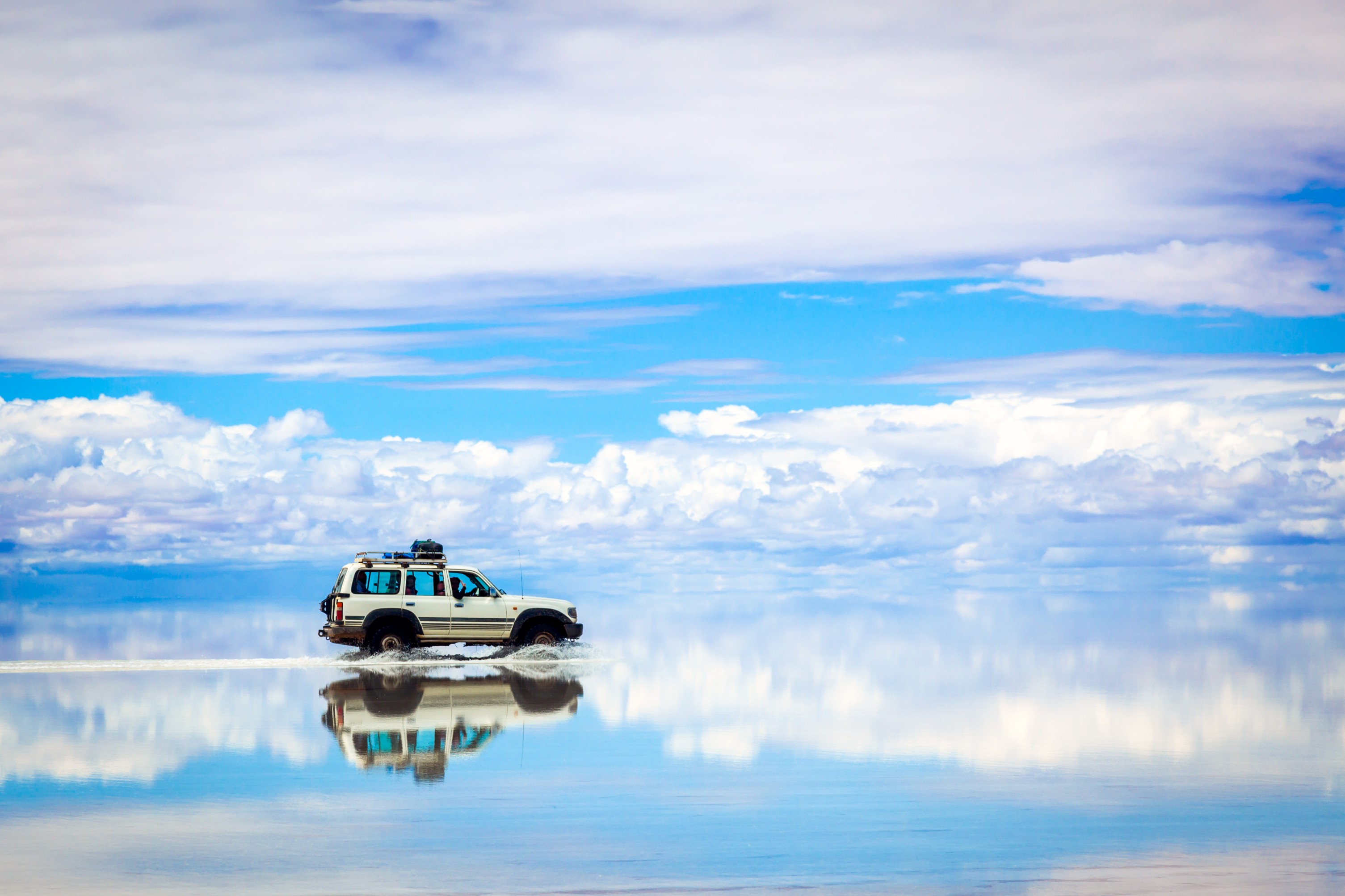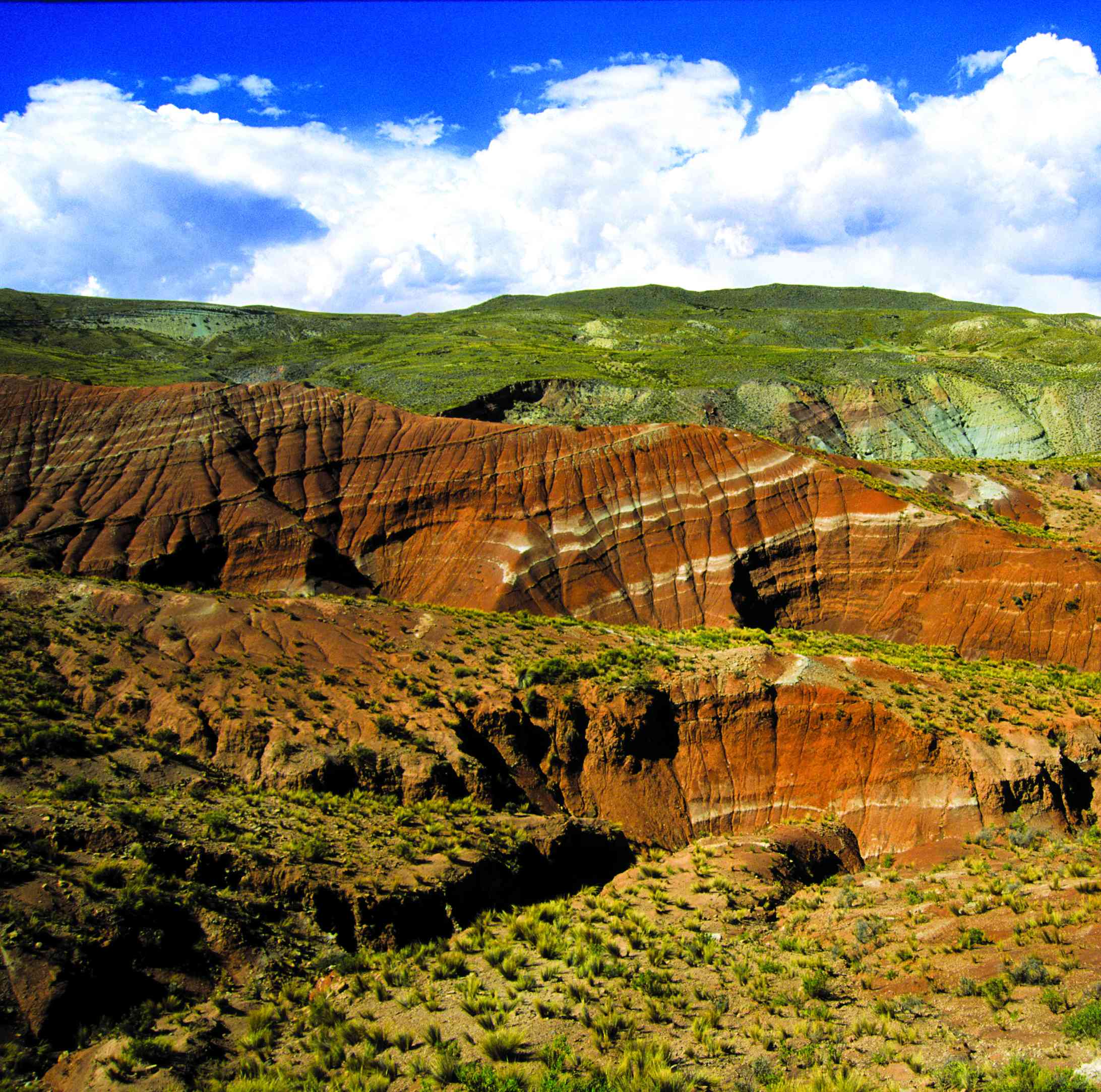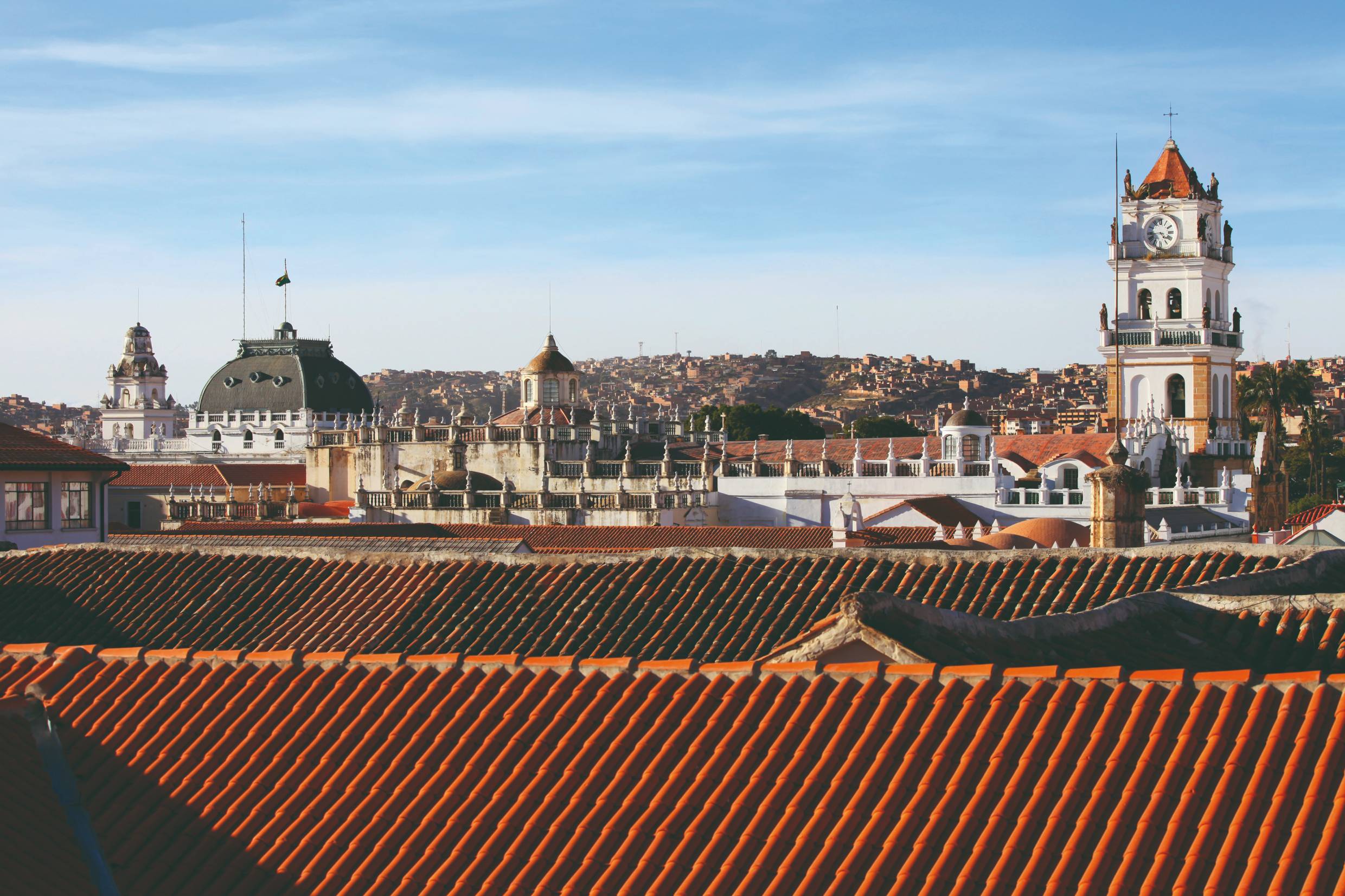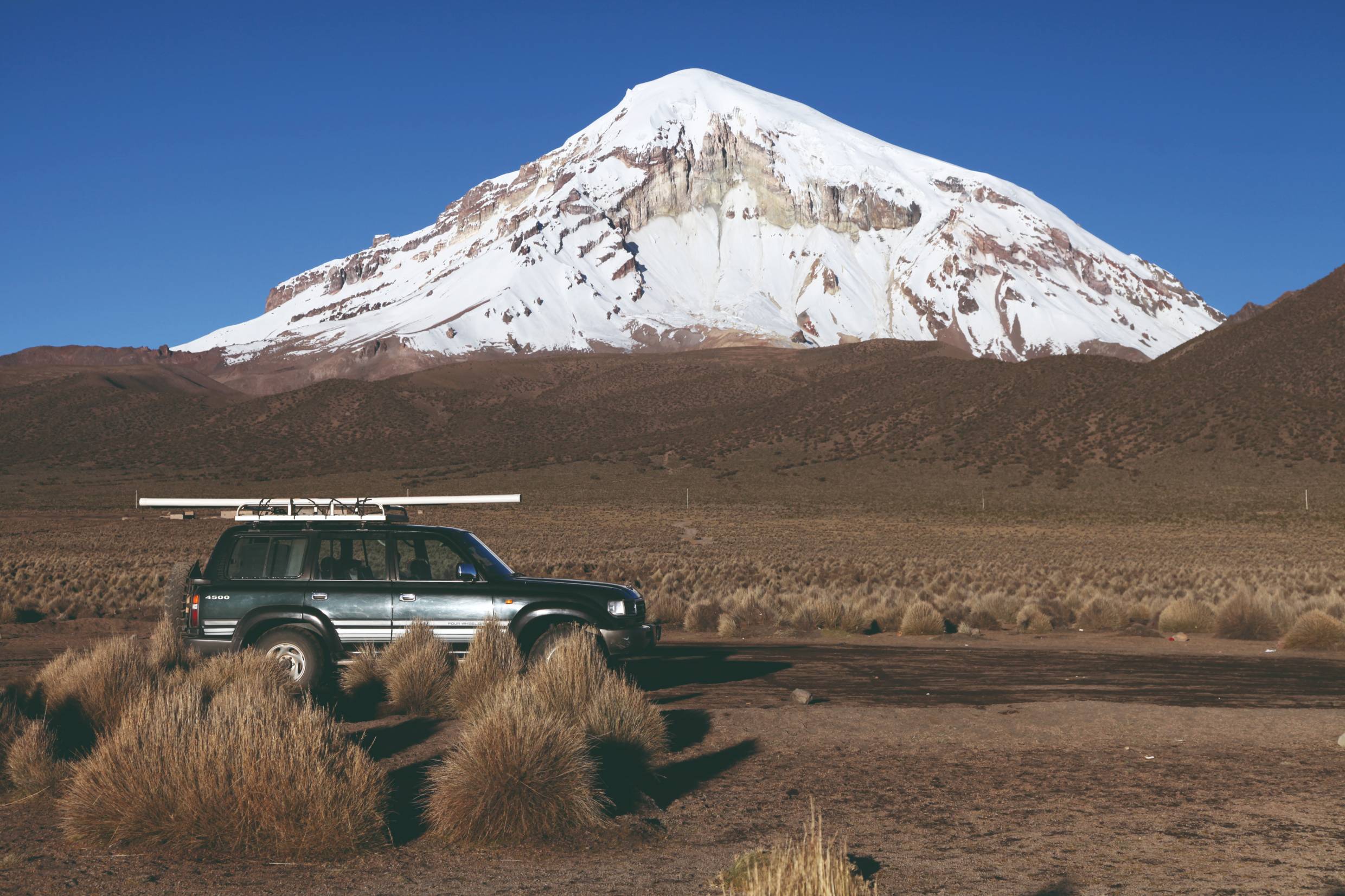Bolivia is: the Uyuni salt flat, Lake Titicaca, the altitude, the Andes ... but it is also a bath of diversity, the unexpected, multicolored markets, a surprising geography and biodiversity. Bolivia, it is necessary to live it, to take the time to discover its roots, its Andean culture and its territory. The Bolivian people, in its diversity and with its indigenous, Inca, Spanish influences, is attached to its traditions, to the Earth - the Pachamama, and to what it offers.
To the rhythm of the Altiplano, we walk through the paceño markets, sail on Lake Titicaca and immerse ourselves in the Aymara traditions in the Cordillera Real. We leave on an expedition to the deserts, in the heart of the forces of the Earth. We meet Marlene, Celine and Christophe to "live like a local" in the colonial cities of Sucre and Potosi.
To end our journey, we listen to our desire and we leave the possibility to decide on the spot of the color of our adventures: coca culture in the Yungas, or visit of the open spaces and volcanoes of the Sajama.
Anything is possible, nothing is certain. It is following this saying that you will live your most beautiful experience of Bolivia and its people. It is by letting yourself be carried away by the uncertainty, that you will have the best surprises, the best encounters, the best experiences, and that your trip will have taken on a meaning that you did not expect. The main reason to travel is often otherness. But what is that? It is precisely the quest for an elsewhere or the other, the quest for oneself. Bolivia, a resilient and sober land by nature, offers without a doubt one of the most unexpected playgrounds to discover the meaning of your journey.
We leave towards the unknown and we come back grown up by the unexpected, with an additional baggage: the awareness of what surrounds us. We will tell you about our country, as we live it and through our experiences, and we will share its history. We take our responsibility towards the environment and societies, transmitting, through our way of travelling, our awareness of the need for transition. A transition to simpler, more energy-efficient, more responsible lifestyles.
Day 1: El Alto Airport - La Paz
Day 2: La Paz
Day 3: La Paz - Copacabana - Yumani
Day 4: Yumani - Chuquinapi
Day 5: Chuquinapi - Tuni
Day 6: Tuni - La Paz - Uyuni
Day 7: Uyuni - Guadalupe
Day 8: Guadalupe - Quetena
Day 9: Quetena - Siloli Desert
Day 10: Siloli Desert - San Juan
Day 11: San Juan - Uyuni - Colchani - Uyuni
Day 12: Uyuni - Potosi
Day 13: Potosi - Sucre
Day 14: Sucre
Day 15: Sucre - La Paz
Day 16: La paz
Day 17: La Paz - Coroico - La Paz - Sajama
Day 18: Coroico - Puente Villa - Sajama
Day 19: Puente Villa - La Paz - Sajama - La Paz
Day 20: La Paz - El Alto Airport
 ©saiko3p - Shutterstock.com
©saiko3p - Shutterstock.com
We arrive in La Paz via El Alto, an immediate change of scenery! We jump in a private transport to cross this giant market and we stop at the first cable car station.
We take altitude, to realize what La Paz looks like, for real, a city extended in a huge crater. Small colorful "casas" as far as the eye can see, markets in all directions ... the cabins fly above this chaotic atmosphere, full of life, with the snowy peaks of Huayna Potosi and Illimani (emblematic glaciers of Bolivia over 6000m altitude) as a backdrop.
We stop at Sopocachi, a stone's throw from the hustle and bustle of the center. We love to walk in the quiet streets of this small district of La Paz. We find small shops, small bars which are worth stopping by. We will take a mate of coca at the market of Sopocachi, the sacred and traditional drink, the remedy against the altitude sickness. And the yapa, the little extra offered by the saleswoman, because we "yapa" always a good customer here.
You spend the night at the Casa del Monticulo.
 ©Patrice ALCARAS
©Patrice ALCARAS
We leave for a day of exploration in La Paz. We walk through the streets of Sopocachi, towards the center, with a break for a fresh juice at the mercado Sopocachi and a "salteña" on the way. The salteña is the Bolivians's 11am snack, it is a small pastry filled with chicken or beef in its juice. The challenge: to eat it, without cutlery and staining...
La Paz is a mixed and contrasted city, the perfect sample of a whole country. From the market district, full of colors and smells, we cross a few streets to find ourselves in the heart of the historic district, now a business center. Two worlds that coexist 200 meters apart and the only thing they have in common is the permanent and noisy chaos that characterizes them.
We take a mate of coca, or chewing leaves on the Sagarnaga street. We cross the Mercado de Las Brujas (Witches market), where we buy a miniature to please the Ekeko, god of abundance. The tradition wants us to project all our hopes in the purchase of the coveted object in miniature, which will then be ritualized.
In the historic district, we walk along Calle Jaen, one of the last colonial streets of the city, with its cobblestones and colorful houses. We take the time to push all the doors to discover small courtyards, galleries, the museum of musical instruments, and we meet Rosario. She tells us about culture, clothing, traditions, and invites us to try on her many cholita skirts (7 overlapping ones, they say), giving us all her secrets of cholita.
We have lunch at one of the common tables of the market, with the Paceños. The choice of dishes is rich, and the smells of grilled meat with Aji sauce mix with those of fried food and other spicy soups.
We reach El Alto by cable car, we fly over houses as far as the eye can see, we intrude above the inner courtyards, terraces where traditional clothes and dance costumes dry... On the cliffside, the shamans are perched, leading the offering ceremonies to the Pachamama. Let's venture to one of them to have the coca leaves read to us!
We go down by the general cemetery. Far from being scary or sad, this unique cemetery is animated, colored by large murals and decorated by the families of the deceased. Here, death is celebrated: people sing, dance, and make offerings to honor the missing loved ones. This visit allows us to better understand the Bolivian culture towards its dead. We then pass by the Calle de Los Andes, street of the carnival costume makers, stores and dressmakers. We could watch for hours the meticulous work of the Diablada mask makers. Further down, towards the market, we find custom-made hats, jewelry of all kinds and cholita petticoats.
We jump in a collectivo to return to Sopocachi.
For dinner, we will provide you with a list of restaurant suggestions of all types. In Bolivia, we are lucky to have varied and quality food, we eat well. It's simple, here confluence the products of the Amazon, the Yungas (tropical fruits and vegetables), the products of the Altiplano (potatoes, quinoa, llama), the meat of the Beni, and the products of Lake Titicaca. The meal can be accompanied by a good local wine from Tarija with a high altitude grape variety.
You spend the night at the Casa del Monticulo.
 ©Patrice ALCARAS
©Patrice ALCARAS
We meet at the general cemetery; instead of private transportation, we suggest you take a collective bus to Copacabana. The journey takes on another dimension; the journey itself is an excursion. After the traffic jams at the exit of La Paz and El Alto, we are on a bumpy road, Andean music in our ears and the strong smell of coca leaves on the bus. On our left, on a clear day, the Sajama, the highest point of Bolivia with its 6 542 m.a.s.l; on our right, the Andes Cordillera. Halfway there, the lake begins to show up.
We arrive in Tiquina, where we get off the bus to cross the mouth by boat. On the quay, we let ourselves be tempted by small fried "ispis" from the lake, spiced with Aji (spicy sauce). Be careful not to lose sight of our bus which crosses on its side, if we let ourselves go, it could leave without us.
An hour left before arriving at Copacabana.
On main square, we can choose for lunch, between the trout from the lake with butter, garlic, tomato, or llajwa - a spicy sauce that is a must in the Andes... or a fresh fish ceviche with tiger's milk and sautéed corn.
We then board a lancha to the village of Yampupata. From there, we hike to the village of Sampaia (3-4h top), by the ridge, crossing small villages and with a breathtaking view of the lake, the mainland, the Andes, and Peru.
Then we reach the Sun Island. It is the most extended island of the lake. It is also the one which shelters the most temples and sacred places. It is finally a place impregnated with legends, still very present in the spirit of its inhabitants.
You spend the night at the Ecologe La Estancia hotel.
 ©Sylvie LIGON
©Sylvie LIGON
We set sail aboard a catamaran, built by young people from the local community of Santiago de Huata, on the other side of the lake.
The crossing of the lake is peaceful, at the rhythm of the wind, leaving us time to admire the Island of the Moon, and the Royal Cordillera in the background.
We spend the night in Chuquiñapi, a small, quiet village, far from the crowds.
 ©Arnaud BONNEFOY
©Arnaud BONNEFOY
We leave in the direction of the heart of the Cordillera, up to Tuni.
We spend two days hosted by the Quispe family. Jaime and Marisol welcome us in their home in Tuni, an Aymara village at 4 400 m.a.s.l., inhabited by about ten families.
The ancetral Aymara traditions are still very present there, and the community of Tuni is committed to continue and share them. No staging, no disguises, the Quispe's open their doors for us and let us live for a few days with them, in all simplicity, with the Pachamama at the center of their beliefs.
You spend the night in the Ecolodge of Tuni.
 ©Olga Kot Photo - Shutterstock.com
©Olga Kot Photo - Shutterstock.com
We let ourselves live to the rhythm of the Cordillera. We follow Vicky to the village school, why not try an Aymara language course. The transmission of ancestral traditions also involves the teaching of this language still spoken in the villages.
We then offer ourselves as a kitchen assistant with Denys and Marisol. The speciality here is Huatia, cooking in an oven dug in the ground. One of the flagship foods is chuño, a dehydrated potato. On the Altiplano, the soils and climate allow some communities to harvest only one potato a year. As a method of preservation, the Andean people use a dehydration process during the coldest months to extract starch from the potatoes. The taste is ... peculiar, but the method is ingenious and one would do well to learn the technique.
We participate in different tasks depending on the season and the needs: making straw mattresses that will be sold in the surrounding area, collecting animal excrement for fuel in the houses.
The shearing of the llamas is a real test, a little muscular, which first challenge is to immobilize the animal. With the spun wool, we will be able to learn weaving and the making of warm clothing which is very appreciated in the mountains.
We hit the road towards La Paz.
Your driver takes you to the bus station.
A new stage of our adventure awaits us. We leave for the South of Bolivia, in the desert.
We take a night bus to Uyuni. Reclining seats, small snack, more comfortable than a plane and less CO2 emission!
 ©Onfokus
©Onfokus
Our driver-guide of expedition welcomes us at the arrival. After a good breakfast, we leave for 5 days of 4x4 expedition, in the direction of unexplored regions.
We start the day with an important place in the history of Bolivia: the old Maestranza of Uyuni, which is now a train cemetery. The remains of locomotives from the end of the 19th century are preserved there, they were the ones that transported ore from the region to the Chilean ports.
We then enter the Lípez region, and head south towards the Ciudad del Encanto. We walk through the nooks and crannies of this geological formation, which looks like a giant sand construction. On our way back, we pass by San Pablo de Lipez, which is one of those places that we don't expect to be inhabited because they seem so lost in the middle of the great arid desert void of South Lipez. But where we make some nice encounters.
Travel time: 6 to 7 hours
Marina, who lives in this community of 3 families, hosts you warmly at the Hospedaje de la Roma (basic comfort).
 ©Sylvie LIGON
©Sylvie LIGON
We leave to discover the Ciudad de Roma. We feel very small in front of this natural spectacle of geological formations of all forms. In the middle of this very mineral landscape, we also walk along colorful lagoons, including the Laguna Celeste at the foot of the Uturuncu volcano (6,012 m.a.s.l.), which still gives off fumaroles with the smell of sulfur. We cross vicuñas, vizcachas, ñandús, flamingos, sheltered by the Eduardo Avaroa nature reserve.
Travel time: 8 hours
We spend the night at Doña Braulia's guest house (basic comfort).
 ©Jean-Baptiste THIBAUT
©Jean-Baptiste THIBAUT
We drive west, in the direction of Laguna Colorada. This one owes its intense brick-red coloring to the presence of phytoplankton that reacts to sunlight. Then, we continue the excursion towards the Sol de Mañana geysers (4850m), located in a volcanic crater emitting sulfur vapors and hot water jets from 10 to 50 meters high. We make a stop at the Polques Thermal Baths before advancing along the Laguna Salada and crossing the Dali Desert (so named because of the landscapes that remind us of some of the master's paintings).
At the end of the morning, we reach the Laguna Blanca and the Laguna Verde, at the foot of the Juric and Licancabur volcanoes (5960m). We then witness a curious phenomenon: the wind rises and the Laguna Verde takes on a spectacular emerald green hue.
We head back to Laguna Colorada in the late afternoon. The trail continues through the beautiful scenery of the Siloli desert and its famous "stone tree", where some viscaches sometimes venture.
Travel time: 7 hours
You spend the night at the Hotel del Desierto.
(availability of double room with matrimonial bed not guaranteed)
 ©Sylvie LIGON
©Sylvie LIGON
Heading north, we follow the Chilean border along the "Jewel Road": Laguna Honda, Ch'arkota, Hedionda and Cañapa, sanctuaries of 3 varieties of flamingos. Stop at the watchtower of the volcano Ollagüe (5,865m), still active, and which is also home to one of the highest sulfur mines in the world.
Then, we cross the small Salar de Chiguana, at the foot of the Tomasamil volcano (5,900m), before reaching the village of San Juan, where there are spectacular mummies of the "Lords of the Lipez" and a small museum dedicated to them.
Travel time: 6 to 7 hours
You spend the night at La Cabaña de Sal hostel* (basic comfort).
 ©Arnaud BONNEFOY
©Arnaud BONNEFOY
To finish our crossing today, we leave to discover the largest salt desert in the world! From San Juan, two hours of track allow us to reach the Salar de Uyuni (3,650m). The sensation is unique: the horizon has no limits and the immensity invites silence. We drive on this immense white expanse to reach the Incahuasi Island. This surprising island of volcanic origin, lost in the heart of the salar, offers a breathtaking view of the salt desert and the surrounding volcanoes. It is covered with stromatolites (limestone structures synthesized by fossilized bacterial colonies, the first traces of life on Earth) and giant cacti.
In the afternoon, we continue the crossing of the Salar: heading east towards the town of Uyuni. Before arriving, we stop to visit a salt farm and the old salt hotel built on the surface of the Salar.
Travel time: 6 hours
To end the day in beauty, we enjoy a unique moment: we admire the sunset on the salar while tasting a South American wine.
You spend the night at the Tambo Aymara hotel.
 ©Arnaud BONNEFOY
©Arnaud BONNEFOY
We are taking a bus towards Potosi.
Marlène will take is on an immersion in her past as a silver mine worker in Potosi, an ancient source of wealth on the European continent.
We have lunch at a family's home, for a real leap into the daily life of these workers of the Cerro Rico, the main mine of Potosi.
A visit to the Casa de la Moneda plunges us into the colonial era and the history of this silver city.
It is in this beautiful colonial-style house, now converted into an important historical museum, that the Spanish crown currency was minted until the 19th century. The Casa de la Moneda is also a testimony to the prosperous past of the "Imperial City" where the most important silver deposits of the New World were found. As a result of this discovery, Potosi became the main supplier of silver to Spain.
Please note: Casa de la Moneda is closed on Sunday afternoon and Monday.
You spend the night at the Colonial hotel.
 ©Sylvie LIGON
©Sylvie LIGON
As in Eduardo Galeano's book, "Open veins of Latin America", we are immersed in the reality of this city plundered of its wealth. We exchange with the miners and slip into the tunnels of the Cerro Rico mines.
We take a bus to reach the white city of Sucre, another important place of the colonization.
You spend the night at the guesthouse La Selenita.
 ©Arnaud BONNEFOY
©Arnaud BONNEFOY
We meet Celine, a French woman who has been living in Bolivia for more than 10 years. She shares with us her daily life and her love for her adopted city, its culture and its history.
We start with a traditional cooking class. We go to the city's market to buy peanuts, vegetables, meat and other spices to prepare the famous Bolivian Sopa de Mani. We go through stalls filled with all kinds of fruits and vegetables. We chat with the caseritas and have a small juice.
We then take our place in the kitchen, to chop the onions, cook the meat over a low fire, mix the peanuts, fry the vegetables... the secret of the Sopa is in the noodles, grilled before cooking them, and in the llajwa sauce, a spicy sauce that accompanies absolutely all Andean dishes.
We follow Celine through the streets of Sucre with its white architecture, listening to her stories about the key role of the city in the history of Bolivian liberation. Between two monuments, we pass by her craft store, reflecting the bohemian atmosphere of the city.
To end our visit, we share a small artisanal beer in one of the favorite addresses of our guide.
You spend the night at the guesthouse La Selenita.
 ©Arnaud BONNEFOY
©Arnaud BONNEFOY
Christophe, a Frenchman settled in Bolivia for years, honorary consul of France, driver, local liquor producer... is our guide for the day. He makes us discover his favourite places in the chuquisaqueña countryside and his Quechua culture.
We have lunch with his adopted family in Candelaria and discover the secrets of weaving, a craft specific to the region.
Your driver will take you to the bus station.
We take a night bus to La Paz. Reclining seats, small snacks, more comfortable than a plane and less CO2 emissions!
 ©Arnaud BONNEFOY
©Arnaud BONNEFOY
Your driver will pick you up at the bus station.
The Bolivian dances are a true representation of the mix of the Bolivian culture. Carnival is the moment to abolish hierarchies, to overcome taboos and to express, behind the masks, all those occult worlds so present in beliefs.
Whether it's Carnival, Gran Poder (La Paz festival) or the start of the university year, we can't help but come across groups of young paceños rehearsing in parks or city squares, reinvented as a dancefloor for the occasion. Tempted by the idea of participating in a rehearsal of Tinku, Diablada or Llamerada?
A group of dancers will proudly teach us the steps and the meaning of their choreography. For the exercise, endurance is key. At an altitude of almost 4,000 meters, even after 15 days, the lack of oxygen is still felt.
We go down to the southern zone to have lunch on the terrace. Another atmosphere, another city, you have to know that we gain 1 degree for every 100 meters of altitude difference. So the calculation is simple, we take advantage of 4 additional degrees going in the South zone. The terraces are pleasant and less noisy, the cafes are "fancy" and the streets are quieter. We take advantage of the small parks where the children play, of the modern stores. There are also the beautiful neighborhoods, safe condominio, with incredible houses. You get out of the hustle and bustle of the business district, and you find a certain sweetness of life.
You spend the night at the Casa del Monticulo.
 ©Arnaud BONNEFOY
©Arnaud BONNEFOY
For your last three days of exploration in Bolivia, we propose you to choose the end of your trip. Dare the unexpected, you will be able to decide on the spot.
Option: Do you want warmth and tropical nature?
Meet coca growers in the Yungas
We descend from our heights to the pre-tropical Yungas. We find there the heat and a green and luxuriant vegetation.
We start from La Paz and climb to almost 4,600 meters above sea level in La Cumbre. This is where the descent by mountain bike begins. From here we leave the Altiplano and enter the Amazon basin. From now on, we will lose 100 meters of altitude and gain 1.6 degrees every 10 minutes. We leave the llamas, the snow, the rock, to reach Yolossa, water, mangoes, coffee, parrots, monkeys, at 1,200 meters of altitude. The green replaces the grey, it is an explosion of colors, smells, oxygen.
This road is the only one that links the Andean capital to the producers of Amazonia, in case of social conflict, blocking it with a few trucks means stopping the transport of goods (meat, citrus fruits, coca, coffee) to the capital. The control of this route is essential.
You spend the night at the Sol y Luna Verde hotel.
Option: Do you want to enjoy the great outdoors at the foot of the volcanoes on the Chilean border?
Trek and expedition in the Sajama Park
We leave in direction of the national park of Sajama. On the way, we discover the history of the region of Carangas, passing by its chullpas (burials) and its colonial church.
We enter the park, up to the village of Sajama, nestled between the 3 imposing volcanoes: the Sajama, the highest summit of Bolivia (6542m); and the twins, the Parinacota (6348m) and the Pomerape (6240m). We cross the only inhabitants of the place: alpacas, vicuñas and ñandus (cousins of the ostrich) when luck smiles at us.
 ©Arnaud BONNEFOY
©Arnaud BONNEFOY
Option: Do you want warmth and tropical nature?
Meet coca growers in the Yungas
We are meeting the coffee growers, who have been able to develop their land and get out of the non-virtuous and intensive production of coca so popular in the area. We cross the coffee and coca fields and meet the producers of Coripata.
You will be hosted in a small hostel in Puente Villa.
Option: Do you want to enjoy the great outdoors at the foot of the volcanoes on the Chilean border?
Trek and expedition in the Sajama Park
We explore the park, its geysers and lagoons. We go to the Sorapata Lagoon, a place with preserved biodiversity. We will meet giant coots, water birds that build their nests on the lagoon, like large floating platforms made of algae and grass.
At the end of the day, we take a break to swim in the natural hot springs. The outside air is fresh with a little wind, a classic Sajama weather. The hot water of the spring smokes on its surface, we are surrounded by the three snowy summits, there is not a sound... it is one of those rare moments of total exclusivity.
Walking time: 4 hours. Difference in altitude: +600m/-600m. Altitude: 4,960m.
You spend the night at the Oasis hostel.
 ©Arnaud BONNEFOY
©Arnaud BONNEFOY
Option: Do you want warmth and tropical nature?
Meet coca growers in the Yungas
We go up, passing by Yanacachi, commercial crossroads of the region, we exchange fresh Amazonian products with potatoes, quinoa of the Altiplano.
Option: Do you want to enjoy the great outdoors at the foot of the volcanoes on the Chilean border?
Trek and expedition in the Sajama Park
We walk to the Laguna Huaña Khota, where flamingos sometimes come to mingle with the wild ducks and geese that own the place. We continue to walk around the Sajama volcano and its eternal snows until we reach the historic village of Tomarapi.
We return to La Paz at the end of the day.
You spend the night at the Casa del Monticulo.
 ©Arnaud BONNEFOY
©Arnaud BONNEFOY
Your driver will pick you up at your hotel and take you to the airport.




Each Travel Idea is customizable according to your wishes

